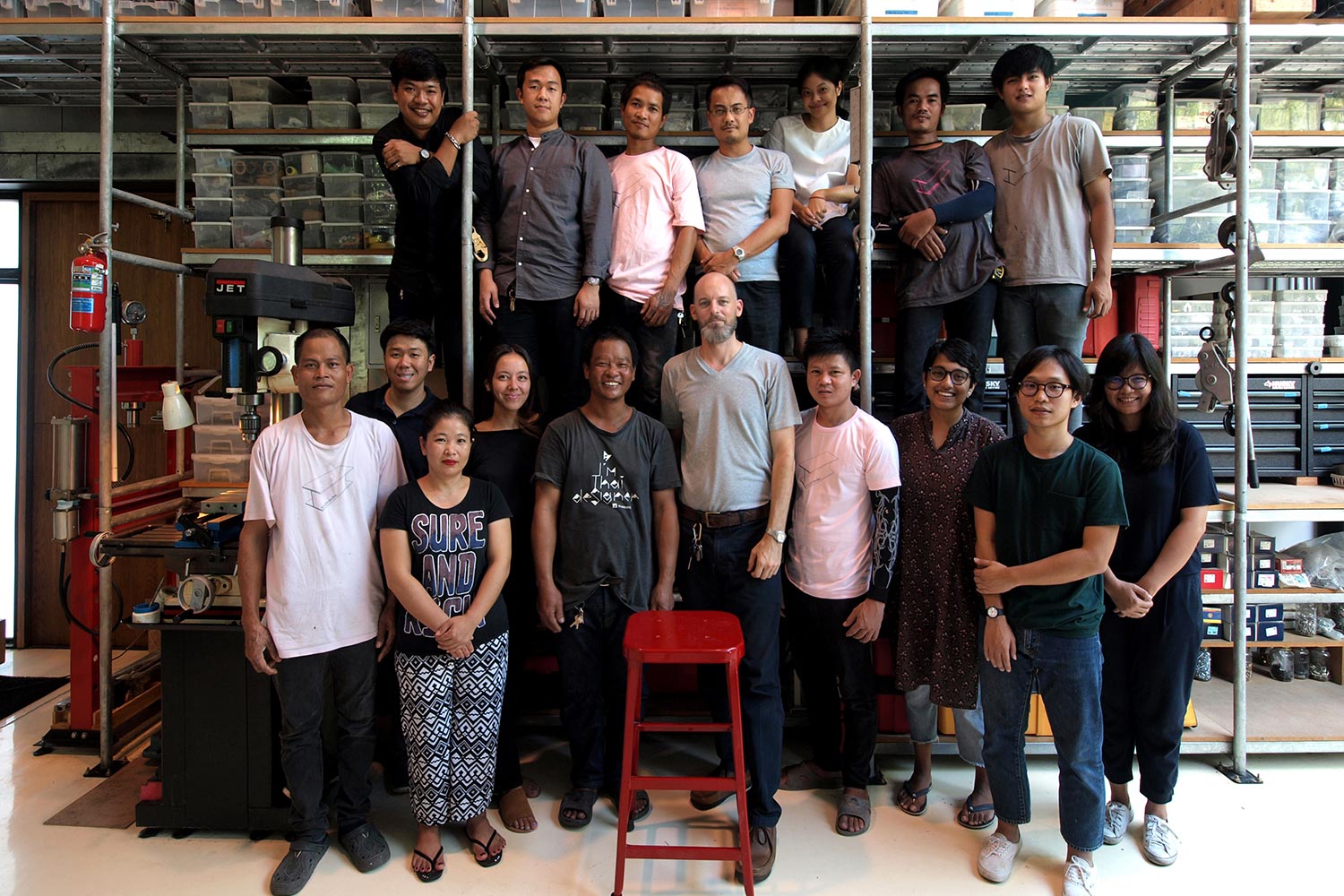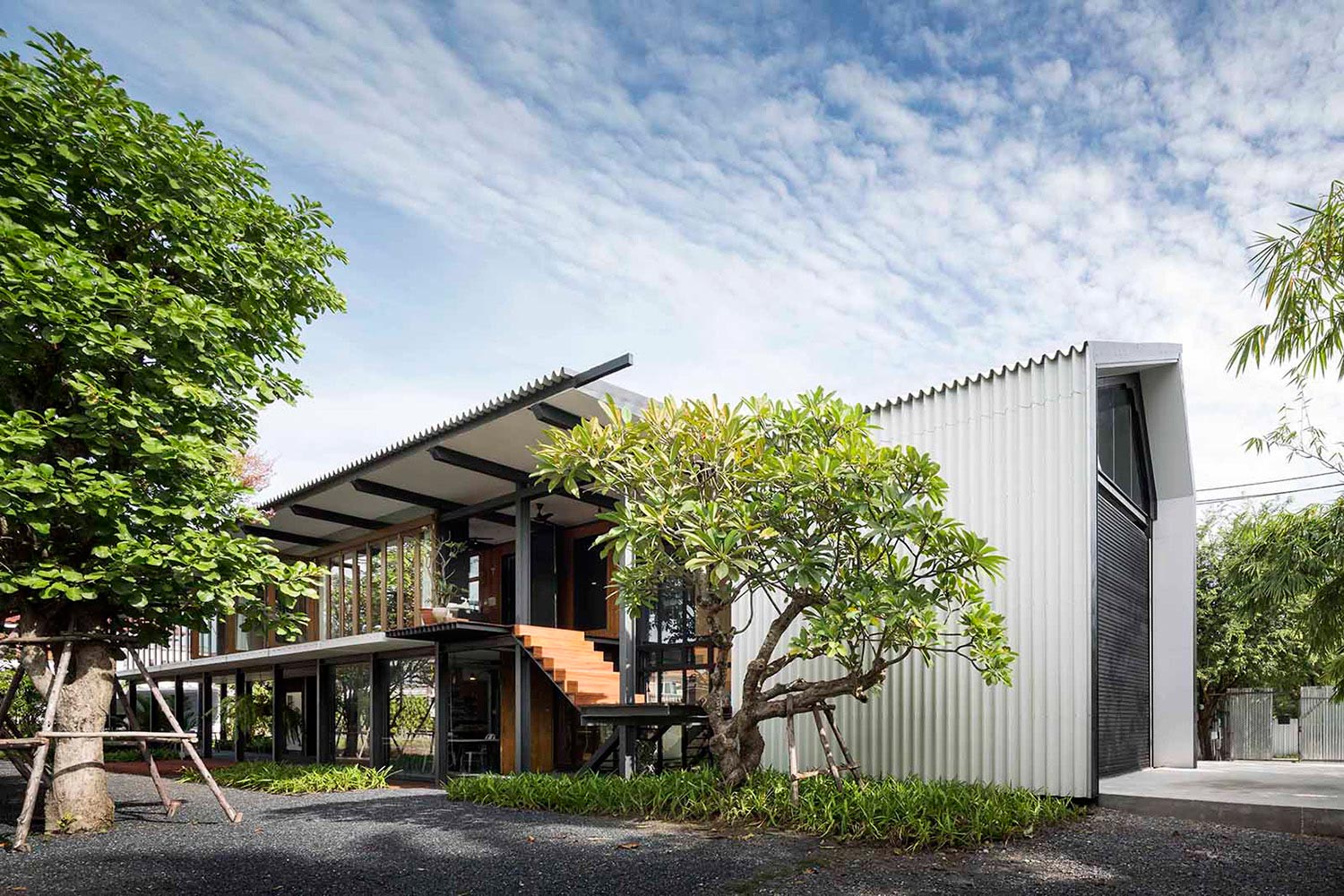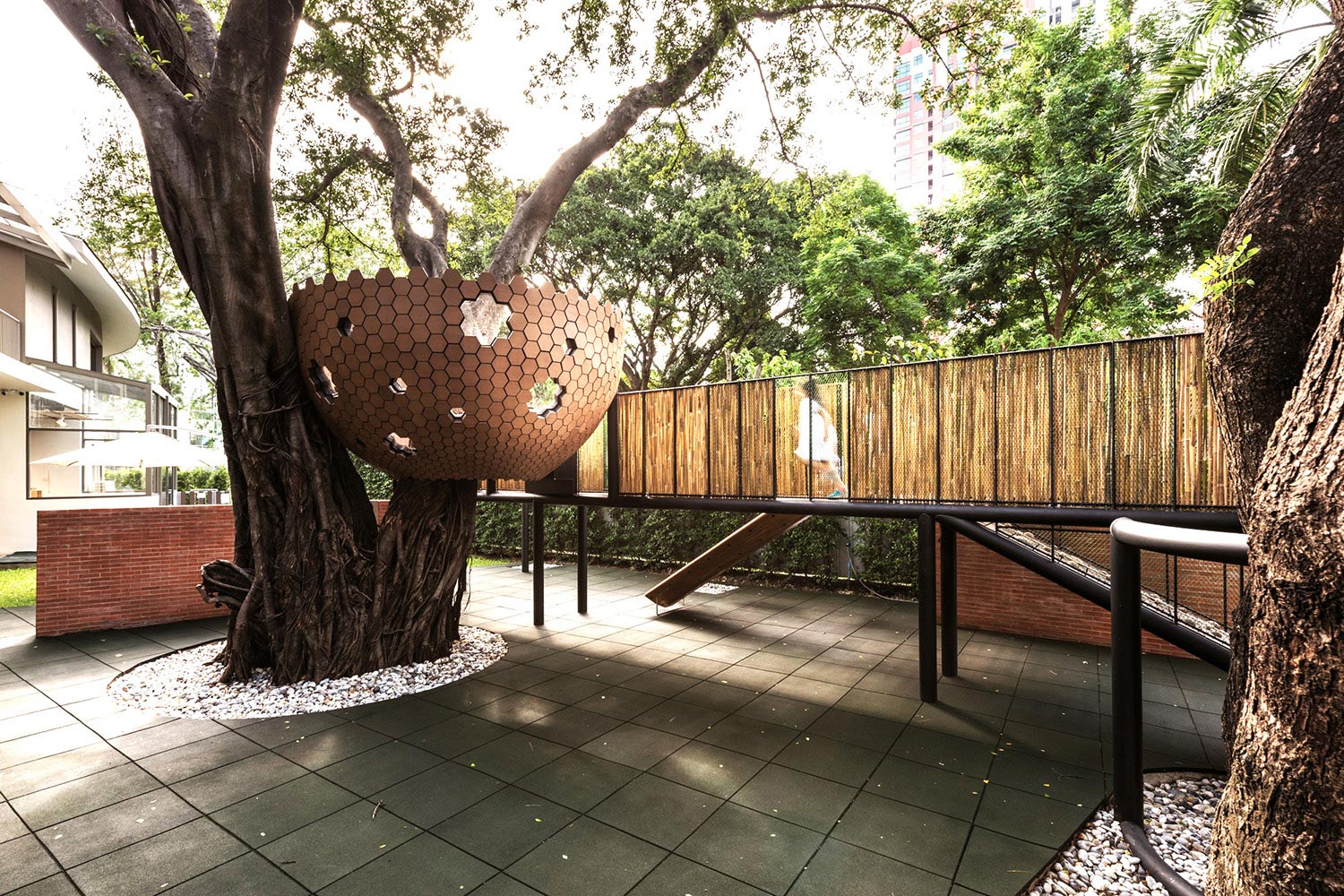Studiomake
Bangkok-based Studiomake, as a practice, maintains that more innate understandings of our environment stem from more intimate scales of interaction. In the firm’s studio and workshops these tactile moments develop from fluid, recurrent shifts between the act of design and the performance of construction. Being able to experience the weight of material and the friction of tools, their ideas are catalysed by empirical knowledge derived in-hand.
Working in full scale and at real time, Studiomake explores the overlapping realms of architecture, interiors, furniture and object design. They find their approach is entirely scalable, as their projects shift from buildings to door knobs, and their roles vary from architect to contractor, collaborator, and/or fabricator.
Studiomake, as a notion, began to coalesce as David Schafer and his late partner, Im Sarasalin Schafer, sought to formalise their long collaboration into a future practice. Having met in the dry heat of Tucson at the University of Arizona, they both moved to San Diego to work for several significant architecture studios, earned their architecture licenses from the State of California, and then prior to moving to Bangkok, returned to academia to explore a more intimate scale of making.
At Cranbrook Academy of Art they spent two years in the metalsmithing and ceramics studios, cutting, casting, carving, machining, lathing, constructing and construing. That momentum and spirit continues today at their studio and workshops in Sai Ma on the outskirts of Bangkok, with a team of 16 designers and craftspeople.
It is critical to state that we they unequivocally Thai designers. While there is a Western affect to the outlook of the studio, the work within any other context would be radically different. They seek to find advantages within their environment but are conscientious to never assert advantage over the environment. It’s a subtle distinction, but Schafer often speaks of the advantage of ‘not knowing’ – the ability to approach an unfamiliar situation with a sensitive but persistent level of inquiry, and conversely, the ability to engineer naiveté and re-see the commonplace with fresh eyes.
The first paradigm shift the Shafers experienced upon unpacking our ideas and tools, was the inverse relationship between the cost of materials and the cost of labour within the Southeast Asian context. Long schooled in designing and specifying in order to save time, they quickly realised that many materials and products they were accustomed to were simply unavailable. What they found instead was that they now had the advantage of time – time to design, time to experiment, and ultimately time to do labour-intensive things with simple materials. That labour is a precious resource, and they have always considered their crew as collaborators.
It was Marco Frascari’s seminal essay that first gave words to Studiomake’s focus on detail, and it is here, at the joints they have chosen to labor; constructing and construing. They find that the intimate points of contact within architecture are the most compelling. Concepts win or lose with the details, when materials, methods, geometry, performance, weather and scale converge. There is a tangible delight that comes from interpretation and decoding. Studiomake desires a deeper level of appreciation with time. It is the richness and consideration of the parts that gives meaning to the invariably capricious form.
The premise is that there is no distinct boundary between the act of design and the act of construction. They form a singularity, intertwined and intrinsically linked. Making inspires Studiomake’s systems of conceptualising and their conceptual framework in turn guides their approach to making. The empirical informs the theoretical and the theoretical informs the empirical. Moving fluidly from studio to workshop allows setbacks and discoveries to overlap and happen more quickly. Failure is indeed a distinct part of the process; every new idea comes with a degree of risk and while experience serves to temper that risk they find themselves constantly on the edge of failure.
Photography: Spaceshift Studio, Nantiya Dumrong, Studiomake




